Innovative probation/police teams cut valley gang crime
November 2, 2009
 The LAPD and the county’s Probation Department joined forces for the first time more than two years ago to battle the San Fernando Valley’s rising tide of gang violence. The idea: to embed a deputy probation officer in LAPD gang details in six Valley stations to provide a missing dimension to gang enforcement.
The LAPD and the county’s Probation Department joined forces for the first time more than two years ago to battle the San Fernando Valley’s rising tide of gang violence. The idea: to embed a deputy probation officer in LAPD gang details in six Valley stations to provide a missing dimension to gang enforcement.
The result, according to police and probation officials, has been a significant drop in gang-related violence in the Valley since the Community Impact Teams hit the streets. Valley gang crime has fallen 18 of the 28 months the program has been in existence – including ten of the latest 12 months, ending in June, 2009, for which statistics are available. “It’s clearly trended down and CIT has been a part of that,” says Paul Vinetz, Probation Director for the Third District, who helped design the program.
As members of Community Impact Teams, six deputy probation officers roll with LAPD Valley gang officers to answer emergency calls as well as make proactive community police stops. They focus on assessment and case management of high-risk gang-involved offenders in crowded neighborhoods. The probation officers have conducted thousands of face-to-face contacts, home visits and searches that have yielded hauls of firearms and other weapons. In 2009, CIT officers seized 35 firearms through August, including one June incident that yielded a sawed-off shotgun and two assault weapons.
Teaming up with Probation officers give LAPD gang cops a greater ability to identify probationers quickly and make warrantless “probation searches” of cars or homes that can turn up drugs or weapons. Being out with the LAPD officers gives the Probation Department greater street presence to spot problems with individual probationers. Working in dense neighborhoods with significant gang problems, probation officers say that their skills and sensitivity have helped them to flag hot spots and act on crime trends that might be invisible to traditional law enforcement alone. “We bring a different focus that complements what the LAPD officers do,” says Probation Director Jose Jimenez, who heads the Intensive Gang Supervision Program that includes the CIT.
Beyond crime suppression efforts, the embedded probation officers also provide another set of eyes and ears on the alert for youngsters at-risk from exposure to gangs and drugs. Probation officials say officers can then make more timely and effective referrals to the Department of Children and Family Services’ child abuse hotline. They can also refer probations and families to other services, including mental health, education, drug treatment and domestic violence.
Making a joyful noise
November 1, 2009
The fireworks cascading above the Hollywood Bowl have died down. So, for the moment, has the roar of Gustavo-mania that has greeted the arrival of the Los Angeles Philharmonic’s charismatic new conductor, Gustavo Dudamel. But in a small practice room on the second floor of a building next to the 1932 Los Angeles Swim Stadium, something is burning bright.
It’s a weeknight, just before Halloween. Paloma Udovic, 28, is heading into her fourth straight hour of teaching here at the Expo Center near USC, where her organization, the Harmony Project, is part of a unique collaboration with the Los Angeles Philharmonic and the city Department of Recreation and Parks. She’s upbeat and gently welcoming as the viola section files in: Cathy Gomez, Claudia Tinajero, and the Pinto-Quintanilla sisters, Amy, 10, and Arian, 13. The Pinto-Quintanillas are a force to be reckoned with around here—a third sister, 16-year-old Adria, also plays cello in the orchestra.
While the Pinto-Quintanilla family trifecta is notable (“I think that’s the record,” Udovic says), it’s hardly unusual.
There’s an infectious energy that seems to pull everybody—brothers, sisters, parents, grandparents, cousins—into the vortex of Youth Orchestra Los Angeles (YOLA), an ambitious and growing program modeled on Venezuela’s legendary El Sistema, whose most famous alum just happens to be that cool new guy on the podium at the Phil.
YOLA isn’t an orchestra per se. Gretchen Nielsen, the Phil’s director of educational initiatives, describes it as a movement to establish youth orchestras in under-served communities. “When you do something this intensively,” she says, “you’re building a sense of community, a sense of family. These kids don’t have easy lives. A lot of them are taking care of siblings, or come from broken homes…If they’re late for class, you ask what’s going on, but you don’t scold.”
It all started when a Los Angeles Philharmonic delegation visited Venezuela to observe El Sistema in 2007—back when the notion of landing Dudamel as the orchestra’s music director was still under wraps. “That trip kind of opened everyone’s eyes,” Nielsen says.
“What happened in Venezuela had to happen here.”
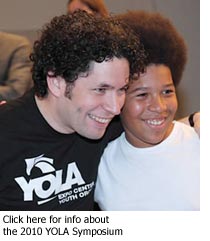 The YOLA EXPO Center Youth Orchestra program is the first such venture, but it won’t be the last. With 200 students ranging in age from seven-year-olds to teenagers now playing in two orchestras at Expo, the Phil is planning to add another site next year, on its way to yet another by 2013, serving a total of 1,000 students.
The YOLA EXPO Center Youth Orchestra program is the first such venture, but it won’t be the last. With 200 students ranging in age from seven-year-olds to teenagers now playing in two orchestras at Expo, the Phil is planning to add another site next year, on its way to yet another by 2013, serving a total of 1,000 students.
The Expo Center kids were a focal point of the huge free concert at the Hollywood Bowl that inaugurated the Dudamel Era in Los Angeles.
More than a month later, everybody who was there is still saying the words “October Third” like somebody might say “The Fourth of July”—a holiday, a triumph, a date that will live in ecstasy.
“I thought it was going to be a really big thing. It was even bigger than that, especially when Jack Black came on,” says 13-year-old Arian Pinto-Quintanilla, a student at Palms Middle School in West L.A. “We stayed for the fireworks. Everything was, like, movie-ish.”
As for Dudamel, “he treated us as if we were his actual orchestra.”
Which, in a sense, they now are.
At the rehearsal for the Hollywood Bowl concert, Dudamel, wearing jeans and a black T-shirt inscribed with “YOLA” and “Expo Center Youth Orchestra,” is a natural, encouraging and funny as he leads the students through an arrangement of Beethoven’s Ode To Joy.
He cracks them up. “Violins, I can see you play but it’s so boooooring.” He asks the cellists if they’re a bunch of 85-year-olds. He makes them sing. He precedes a downbeat by counting in Spanish: “Uno, dos, tres, y….”
He’s helping them see their youth as an outrageous power source, something that can help them play—and be—bigger. “What is the size of our instrument?” he asks the cello section. “Is it like this?” he says, indicating tiny. “Or like THIS?”—arms spread wide.
Ode to joy, indeed.
Star-studded concerts at the Hollywood Bowl are one thing. The hard slog of day-in, day-out practicing is another.
Expo Center orchestra students have three nights of group sectional lessons every week and a full orchestra rehearsal on Saturdays. Some, like the Pinto-Quintanilla girls, play in more than one orchestra.
But, amazingly to anyone who ever resisted piano lessons or been pushed into patent leather shoes and paraded into a symphony hall against their will, the YOLA/El Sistema method actually seems…fun.
“It’s very different from the teaching I’ve done where the parents are forcing them,” Udovic says. Here, at the Expo Center, “it’s the other way around.”
For the kids, part of the appeal has to be the pure play of it all. Before the viola sectional that the Pinto-Quintanillas take part in, the violins have their turn.
A little girl in a sparkling white-and-silver costume floats around the room playing “Invisible String Master,” poking backs, correcting wrist positions, delicately but insistently making her compatriots look more like, well, real violinists.
The informal mood continues into the viola sectional.
“Can we make sure our booties are scooted all the way to the front of the seat?” Udovic urges.
Udovic asks whether the scale they just played was in tune. One of the girls admits she wasn’t listening.
“Listen,” Udovic tells the girls, imparting life wisdom as well as musical advice. “It’s not just in music. It’s in lots of other things. It’s a good thing to do.”
“I view this as a social program, with music as the mode,” says Udovic, 28, a Northwestern grad and self-described “Suzuki baby” who picked up her first violin at age 3. She’s part of a cadre of more than a dozen “teaching artists” on the program staff, working musicians with a gift for instructing young people and an interest in social progress.
Mirna Quintanilla, a medical assistant in Beverly Hills, is the mother of Adria, Arian and Amy—her “three A’s,” she says. Those letters aren’t just initials: “That’s what I tell them for the grades. Only A’s.”
After getting divorced, Quintanilla says, “my priority was to keep them busy.” There were art classes and music, lots of it. They haven’t looked back. “We are busy seven days a week,” she says. Even though they log a lot of miles from their home near the Expo Center (the program aims to serve kids living within a 5-mile radius), you won’t hear her complaining.
“I don’t mind,” she says. “My priority now is my three daughters.”

At left, Amy Pinto-Quintanilla, 10, practices the viola. Her sister, 13-year-old Arian Pinto-Quintanilla, right, plays viola, too. Both also play the violin.
The Expo Center program is free, as are the instruments. “To pay for these classes, we could not afford it,” Quintanilla says. And the results: priceless—like having your daughters perform at the Bowl, under the direction of Dudamel. “I invited all my friends,” Quintanilla says. It wasn’t until the next day that the accomplishment actually sunk in for her daughters: “We played in the Hollywood Bowl.”
Beyond the thrill of such moments, the program derives much of its power from its commitment to spreading its mission and methods around the world.
Dudamel’s mentor, El Sistema founder Dr. José Antonio Abreu, won a 2009 TED award and is using the $100,000 prize to endow the Abreu Fellows Program at the New England Conservatory of Music. Abreu fellows will perform internships at El Sistema-inspired “nucleos” across the U.S.; some will be at Expo Center this spring.
Also in the works: a program developed with USC’s Musical Education Department to begin bringing early childhood music classes to the 3- to 5-year-olds in the Expo Center preschool starting in January.
The Colburn School, across from Disney Concert Hall in downtown Los Angeles, also is getting in on the act with the Colburn Mentorship Program, in which 20 conservatory students will be paired with 20 Expo Center students for one-on-one lessons.
Abreu, in town for the Dudamel debut concerts, recently dropped by the Los Angeles County Hall of Administration to pay a visit to County Supervisors Zev Yaroslavsky and Gloria Molina, along with Philharmonic President and CEO Deborah Borda.
They talked about Abreu’s now-famous observation that children who hold hold instruments can’t hold guns, and recalled the advice he gave Borda when they talked about importing El Sistema to L.A. “Think big but start small.”
The advice now: “Grow without fear.”
Shout it from the mountaintop—it’s Ballard Mountain!
November 1, 2009
Unexpected coalitions can move a mountain. Sometimes they can even change the mountain’s name.
That much was abundantly clear on a recent sunny Sunday morning at First A.M.E. church in Los Angeles, when an array of people from far-flung corners of Los Angeles assembled to pay tribute to a man, a mountain and a shared purpose that, improbably, had brought them all together.
There was a history professor, a geophysicist, a retired entertainment executive, a Los Angeles County supervisor and a retired city firefighter with much of his extended family in tow.
And there was the leadership and congregation of First A.M.E.—there to celebrate the journey that recently culminated in a new name for a prominent Santa Monica Mountains peak: Ballard Mountain.
Until this fall, it was called “Negrohead Mountain”—a ‘60s-era modification of its earlier name, which contained a racist slur.
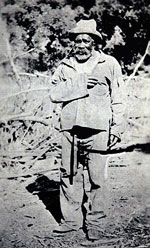
John Ballard
“Before it was Negrohead Mountain, it was another N-word Mountain,” Pastor John J. Hunter told the congregation, celebrating the fall of “another symbol of racism” and thanking Yaroslavsky for his leadership.
“Name the mountain for the man, not his race, and that’s what we’ve done,” Yaroslavsky said. “It’s the right thing to do and it’s a great thing to honor a man who’s been gone for almost 100 years.”
Kenneth W. Hudnut, a geophysicist with the U.S. Geological Survey, presented a map bearing the new name to Ballard’s great grandson, Reginald Ballard, Sr. The United States Board on Geographic Names made the change Sept. 9, at the request of the Los Angeles County Board of Supervisors, which adopted Yaroslavsky’s proposal to do so.
Reginald Ballard, 84, retired from the Los Angeles City Fire Department as a captain in 1978. In the mid-1950s, he had been part of a group of firefighters who challenged the department’s segregation practices, eventually prevailing and opening up promotional opportunities and integrating firehouses.
Although Reginald Ballard had been a part of history in that case, he didn’t know much about his own—until recently.
He said his father, Dr. Claudius Ballard, had been a good doctor but not much of a communicator. “I didn’t know anything about my family tree,” Ballard said. “We didn’t sit around the table discussing things.”
But, after reading an extensive article in the Los Angeles Times (here) that detailed the work of Moorpark College history professor Patty Colman on the Ballard family saga—and the efforts of neighbors who started the push to change the mountain’s name—Ballard and his grown children realized they might be looking at a long-lost link in their family history.
They connected with Colman and with neighbors Paul Culberg and Nick Noxon. Eventually, the connection to John Ballard was confirmed through marriage and death records.
Culberg, a retired entertainment executive who lives near Ballard Mountain, helped get the name change underway by telling Yaroslavsky about it at a holiday party last year. Culberg said he and his wife, Leah, were thrilled to have been part of the coalition that made it happen—and delighted to have been invited to First A.M.E.
As for Colman, “the biggest thrill of all for me was when we actually met the descendants. Sitting there chatting with Reginald Ballard, that’s the closest I’ll get to John Ballard.”
In addition to The Times, the story has been chronicled on television and newspapers from the Agoura Hills Acorn to the New Zealand Herald.
Ryan Ballard, Reginald Ballard Sr.’s youngest child and the great-great-grandson of John Ballard, took a special joy in bringing his wife, Nicole, and their two young sons to the service.
“As a father, it’s quite significant,” said Ballard, 37, a special education teacher at Locke High School. “You’re always thinking of what you’re going to leave to your kids. Who’d have thought that this would be left for them as part of their legacy?”
The family hasn’t hiked up to the Ballard Mountain—yet.
“You know the plan is already underway,” Ryan Ballard said.




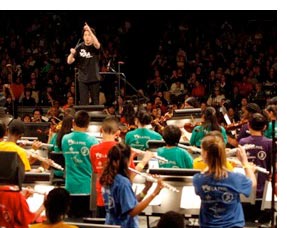
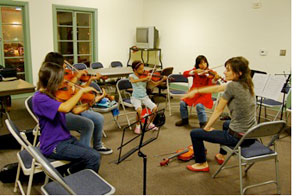
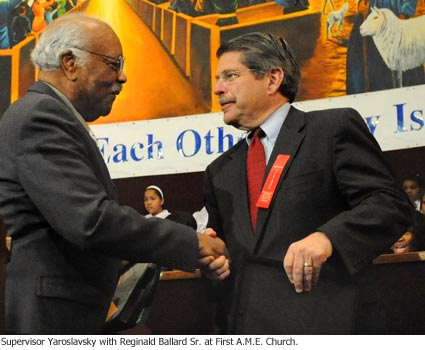





 Check for the latest closure information
Check for the latest closure information








